Totalview Connect¶
You can find Connect under Settings -> Connect in the Totalview Client
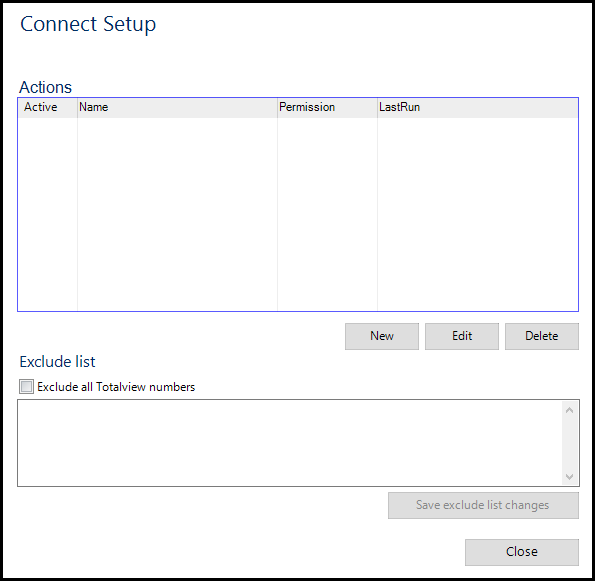
The options are New, Edit and Delete
Exclude all Totalview numbers |
If checked, all Totalview numbers are excluded from the actions. |
New |
Click the New button if you want to create a new Connect setup |
Edit |
You have the option to edit a previous Connect setup |
Delete |
Click the Delete button if you want to delete a Connect setup |
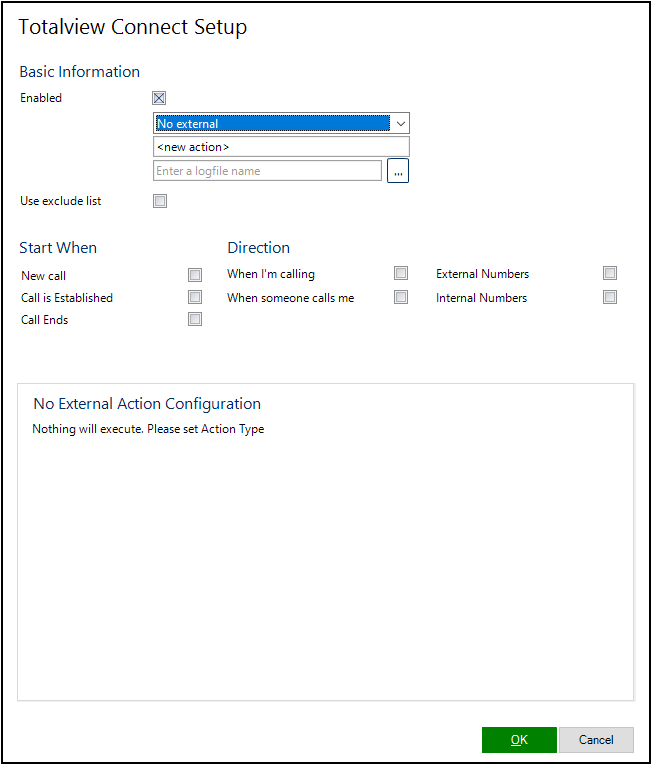
With different Action types, you can define how calls are dispatched to other applications.
Enabled |
Enables / disables the given action |
Action type |
Select from the list between Action types Start application, Activate window, Network send and Http Get |
Action types¶
No external |
No action |
Start application |
With Action type set to Start Application, it is possible to start a specific application when a customer calls you. |
Activate window |
With Action type set to Activate window it is possible to activate/set focus on a specific window. E.g., when there is an incoming call, it is convenient that the Switchboard is getting focus. |
Network send |
With Action type set to Network send, you can e.g. get information about a specific debtor in Navision based on the incoming number. |
Http Get |
The defined action arguments are sent as a query to the selected URL |
Start when
Call starts |
Action is triggered when the call starts |
Call is established |
Action is triggered when the call is established |
Call Ends |
Action is triggered when the call ends |
Direction
When I’m calling |
Action is triggered when you call another number |
When someone calls me |
Action is triggered when someone is calling your number |
Numbers
External Numbers |
Action is triggered only if an external number calls you or is called by you |
Internal Numbers |
Action is triggered only if an internal number calls you or is called by you |
Arguments
Argument |
Description |
[A] |
ANumber. The calling persons ANumber |
[A-CC] |
ANumber, excluding named country code, e.g. [A-1] will remove country code from United States phone numbers |
[L] |
Local number receiving a call or initiating a call |
[N] |
Name or caller |
[I] |
Callid |
[C] |
The triggering command (1: Call, 2: Answer, 3: Hangup) |
[D] |
Direction or the call (0: Incoming, 1: Outgoing) |
[X] |
Was the all Answered (0: No, 1: Yes) |
[ST] |
Starting Time in the format ddmmyyyy hhnnss |
[ET] |
Ending Time in the format ddmmyyyy hhnnss |
[DU] |
Call Duration in the format hhnnss |
[IVR] |
Entered IVR user input in the format (tag=value). Tag is the IVR identification and value is the user input |
[-IVR] |
Entered IVR user input in the format (value) |
Examples¶
Start application¶
In this example Notepad is started every time an internal number is calling.
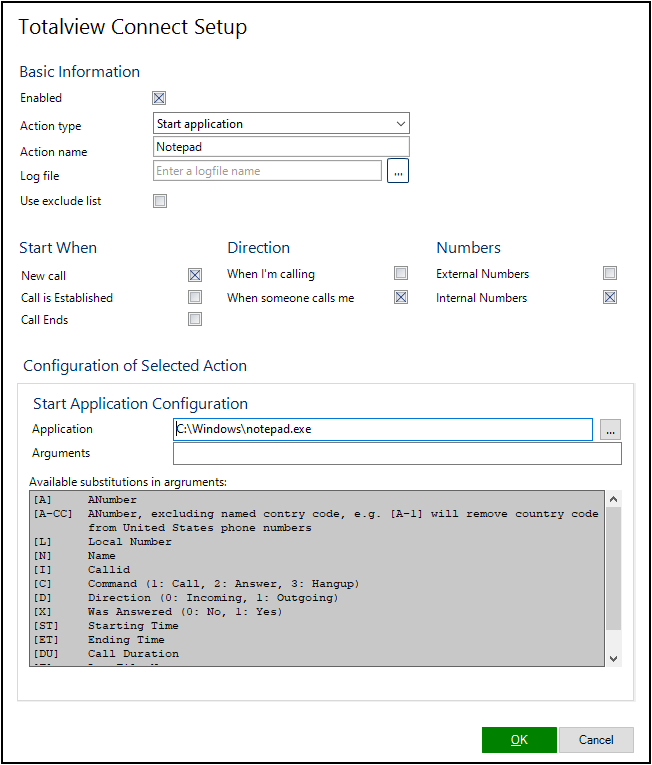
Activate window¶
In this example the Totalview Switchboard get focus everytime someone calls your number. That includes both external and internal numbers.
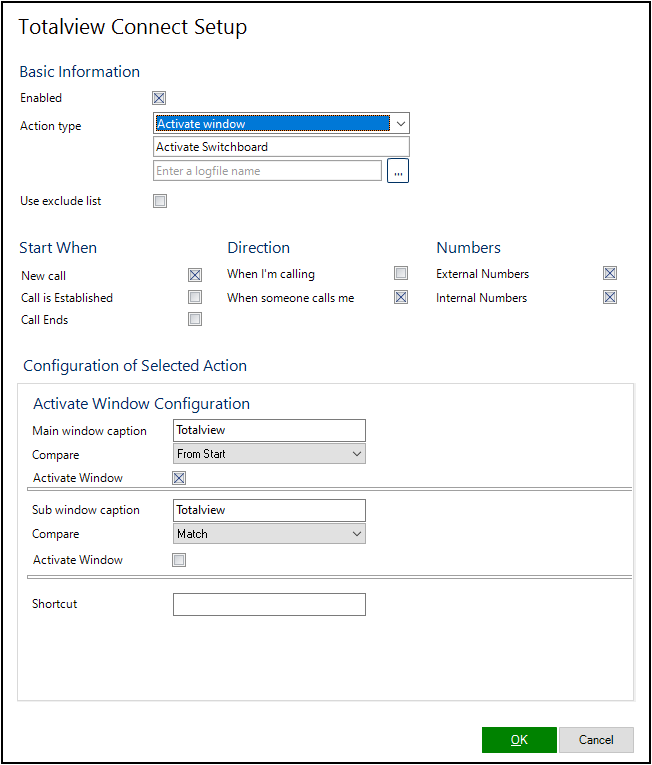
Network send¶
In this example the generated information is sent directly to the local network. Action will be triggered when you have an incoming external call.
The network settings consists of a Host – network address and a port number. In addition you may specify whether to do a UDP broadcast or a regular TCP connection. The contents of the call record are sent to the network.
Using Network send with TCP is the preferred method for signaling Navision.
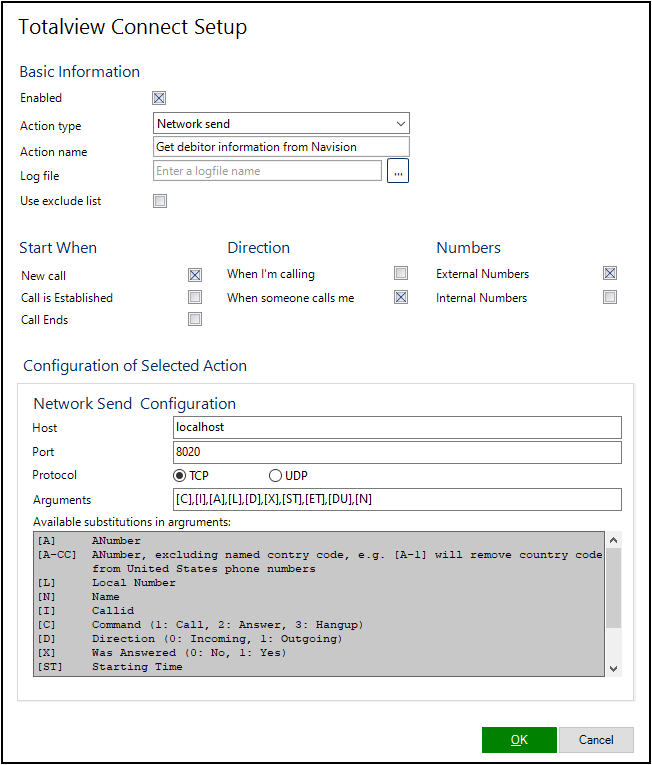
Http Get¶
The GET method is used to retrieve information from a given server using a given URI. Requests using GET should only retrieve data and should have no other effect on the data.
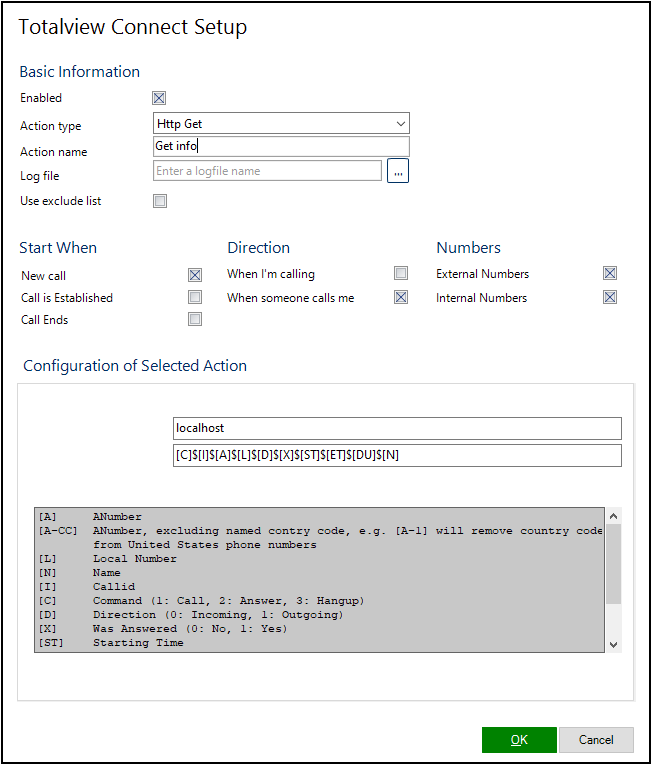
The defined action argumens are sent as a query to the selected URL.
The query is HTTPEncoded using the following rules:
“All characters in the query are converted except for the letters A through Z (and a through z), numerals 0 through 9, the asterisk (*), dollar sign ($), exclamation point (!), at sign (@), period (.), underscore (_), single quote (‘), parentheses, and hyphen (-). Spaces are converted to plus characters (+), and all other characters are converted into hex values preceded by the percent sign (%)”
Http Get examples
URL |
Arguments |
Result example |
Description |
|
[A] |
Where +298344000 is the dialing number |
|||
[-IVR] |
Where 46654 is the IVR user input |
|||
